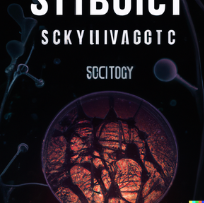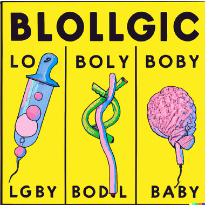Madonna said it best — we are living in a material world. Yet, if we look at where most innovation and venture funding has gone in the past 40 years, it is towards creating and improving our digital lives. Very little of our material and industrial society has changed, and humankind has never been more out of touch with the material world than now. More than 80% of humanity lives in cities, where jobs in the service industry dominate greatly. Few city dwellers are exposed to the reality of how our material world comes about — from food to machines, devices, energy and materials. For instance, in the US less than 1% of the population is engaged in producing food and it is safe to assume that a good percentage of the population knows very little about the many steps between a cow on a farm and the steak on their tables — or a lithium mine in Chile and their Tesla.

If we were to travel back to the 1960s, the cars we would be travelling in, the textiles we would be wearing, the food we would be eating, the packaging we would be using and the sources of energy we would be leveraging would not be that dramatically different from what we are using today. If our 1960s counterparts were to travel back a century to the 1860s well … the physical world around them would look incredibly different. The society we live in right now and the progress we have achieved are ultimately a result of the petrochemical evolution and the internal combustion engine — as Carlota Perez calls it, the Age of Automobile. But innovation in the material world has stalled after that. So far.
Enter Synthetic Biology (SynBio) and the BioRevolution. We are on the brink of one of the most exciting production and supply chain revolutions of the century, with similar disruption potential to the Industrial Revolution in Britain in the 19th century. Thanks to massive strides in computing, lab automation, AI and ML, computation as well as molecular and genetic engineering, up to 60% of the physical inputs in the global economy today could be produced or substituted using biology. That means food, fuels, materials, heavy industries, chemicals, and energy — to begin with. The BioRevolution offers a paradigm shift in how means of production are allocated and distributed. SynBio allows society to move away from using centralised, huge, polluting factories as primary production facilities, towards a world where primary goods are produced locally, efficiently, sustainably and through waste or organic feedstocks. Cells can enable us to produce whatever we want, wherever and whenever we need, potentially transforming manufacturing and supply chains as we know them. Bring on the SolarPunk dream!

SynBio has both the potential to shift the economy towards an entirely new category of means of production (cells as factories) and create distributed and decentralised supply chains (disrupting our current centralised manufacturing paradigm). To go one step further, Drew Endy argues that SynBio can be a positive force for democracy too. If deployed properly, at scale it has the power of democratising access to resources and providing equal access to means of production — this reduces opportunities for resource-based oppression and inherently ensures active, positive participation in democracy.
The implications of this can be transformative on so many levels. For instance, can the BioEconomy be a catalyst for the rise in relevance of ex-industrial cities in Britain, such as Birmingham and Manchester? Do the millions of workers who depend on the chemical industry in Switzerland want to be trained to operate bioreactor-filled plants? Are there skills that can be applied across traditional farming and lab-grown meat cultivating? Who will fund the millions of large-scale bioreactors and are steel and sugar going to become prime commodities of the next century? Will the outskirts of cities be turned into greenhouses, where billions of plants grow our protein intake, and so will ‘Greenhouse Operator’ be one of the new required job skills? Will we achieve truly distributed production or are we going to see another hegemony of developing countries? Pro-globalisation sentiments have been retracting for a while, but are our economies ready to stop relying on cheap manufacturing imported from Asia and what will China’s role be in this new world order? What will be the impact on countries such as Vietnam or Malaysia that are currently relying on manufacturing exports for a significant portion of their GDP? The US has already acted on semiconductors with the CHIPS and Science Act, are we going to see a 180’ turn on manufacturing too?

The past 250 years have witnessed four meaningful technological revolutions that have changed how we look at our material world: the Industrial Revolution (1771), the Age of steam, coal iron and railways (1828); the Age of steel and heavy engineering (1908); the Age of automobile (1971). History shows that every revolution has been ultimately a net positive for progress, civilisation and inequality, but they also come with sharp techno-economic and socio-institutional shifts — and they tend to increase inequality before reducing it.
This is is a real risk for the BioEconomy too. Creating slightly more efficient workflows for office workers is radically different from systemically disrupting how and where society’s basic needs are produced — especially at a time when society is grappling with unprecedented changes, political polarisation, global recession and cultural wars. The context in which the BioRevolution will take place is uniquely complex — our society approaches the 2020s with stark cultural divides between Boomers and Gen Zs, a pandemic that scarred how we view and build communities, a fractured supply chain, wars, climate change, inflation, low political engagement, mental health issues, and an energy crisis. If this technology revolution follows its predecessors, the early-adoption phase will swiftly be followed by a recession period of instability, social unrest and populism before the true golden age where business and society both win. Managing the period of instability is the key challenge to ensure the success of the BioRevolution. I argue that it is imperative that the BioEconomy leaves the scientific and early-adopters community and we find a way to communicate the positive potential of this technological revolution in the most inclusive and equal way for everyone. The BioRevolution should not leave anyone behind.
Every industrial revolution is, at first, a technological innovation — when something is possible technologically and brings socio-economic benefits, it is only a matter of time before it permeates society. This applies to the BioRevolution — the disruptors and innovators here are the academics and scientists driving forward what is possible and we are on the cusp of seeing these innovations permeating our daily lives. Often, the meeting of disruptive technology and societal implications can be a challenge, but also an opportunity. The disruptors in this sector have the responsibility and opportunity to shape the narrative of this new era for the wider society, yet this is one of the biggest SynBio challenges that doesn’t get discussed enough. The impact of BioManufacturing on society is too positively transformational to undermine the challenge of shaping the right narrative for this revolution. So, how do we educate the new generation of BioConsumers? How do we ensure that consumers start interacting positively with SynBio products as soon as possible? How do we communicate new job opportunities in the BioEconomy to those whose lives depended on the old centralised industrial era? How do we manage societal BioFear? Essentially, how do we give the BioEconomy its pop-culture moment?



As more and more goods produced in labs end up in the hands of consumers across the globe, there will be more scrutiny and questions around the technology. While available SynBio consumer goods are still few and these concerns might seem premature, it is not too early to get together as a community and start brainstorming these questions. Is bacteria-fermented collagen a catchy enough name? Algae-produced oil? Genetically enhanced plants? Will new labels say cell-free viscose? Sugar-based chemicals? Micro-organism inoculated concrete? Gas-fermented polyester? How do we create a narrative around lab-grown meat that is inclusive and relevant enough for consumers and beef farmers alike? How do we convince the SynBio outsiders that the impact of these technologies is a win-win for the planet and society?
We are seeing the early outsets of consumers interacting with products of the BioEconomy — through Netflix shows like Vesper, consumer goods like Neoplants, celebrities endorsements like Robert Downey Jr and Ynsect, clothes capsule collections like LanzaTech x Zara or precision-fermented CBD gummies like Gingko x Cronos. This is just the beginning and we have a long way to go before the BioEconomy finally drops the bio- and bio-collagen, bio-fuels, cultivated-meat, bio-fertiliser simply become collagen, fuel, meat and fertiliser.

